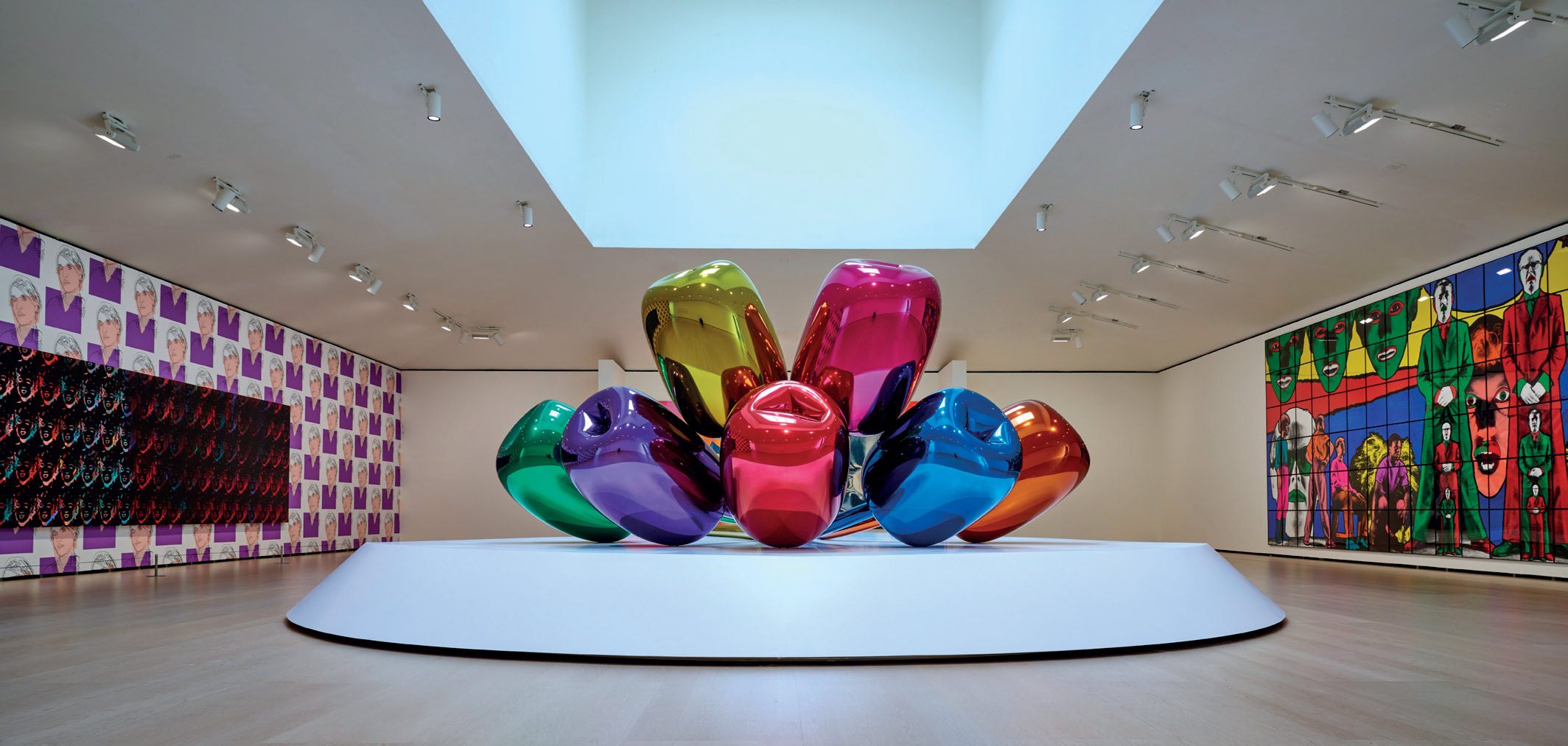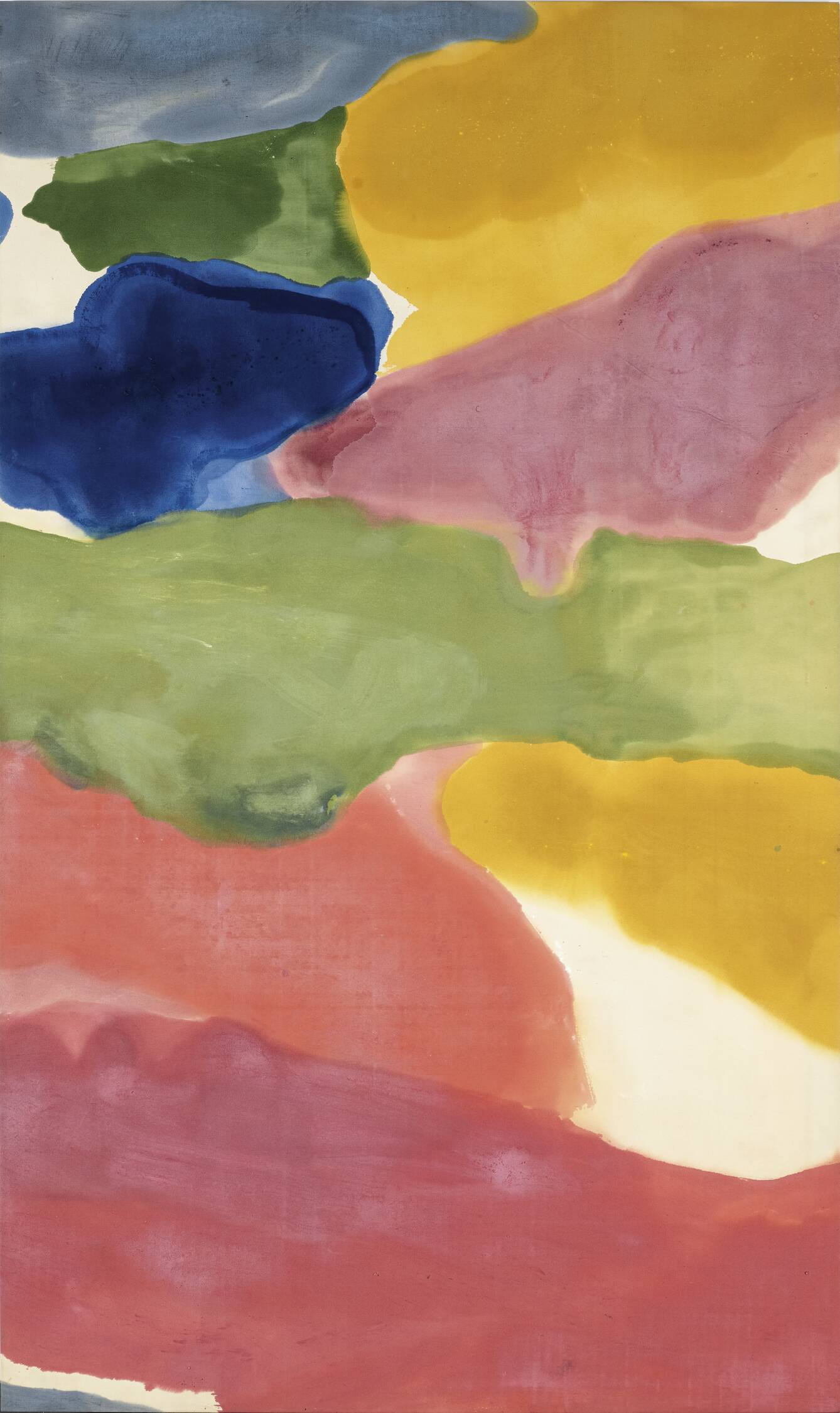Riding the Tide: 1960s
The summers that Helen Frankenthaler spent on the beaches of Cape Cod, in Provincetown, Massachusetts (1960–69), with her husband, the painter Robert Motherwell, set a new course for her painting. If the weightless clouds in Tutti-Frutti (1966) pulse with buoyant abandon, the rectilinear banners in The Human Edge (1967) descend monolithically. Human edges can be eccentric. Frankenthaler courted imperfections just as she coaxed out humor in her work. Summers were not only a time to paint, but a chance to socialize with close friends. The sculptor David Smith was a frequent visitor.
Frankenthaler and Smith shared a common belief when it came to making art: No rules! Whether you were a painter or a sculptor (or both), the mantra was the same: no rules meant never being complacent about how your art got made, the materials used, or what it might look like. Works could be somber but also lighthearted. Smith’s Untitled (Zig VI) (1964)—girder beams stacked, welded, and coasting on miniature wheels—teeters like an over-sized child’s toy.


